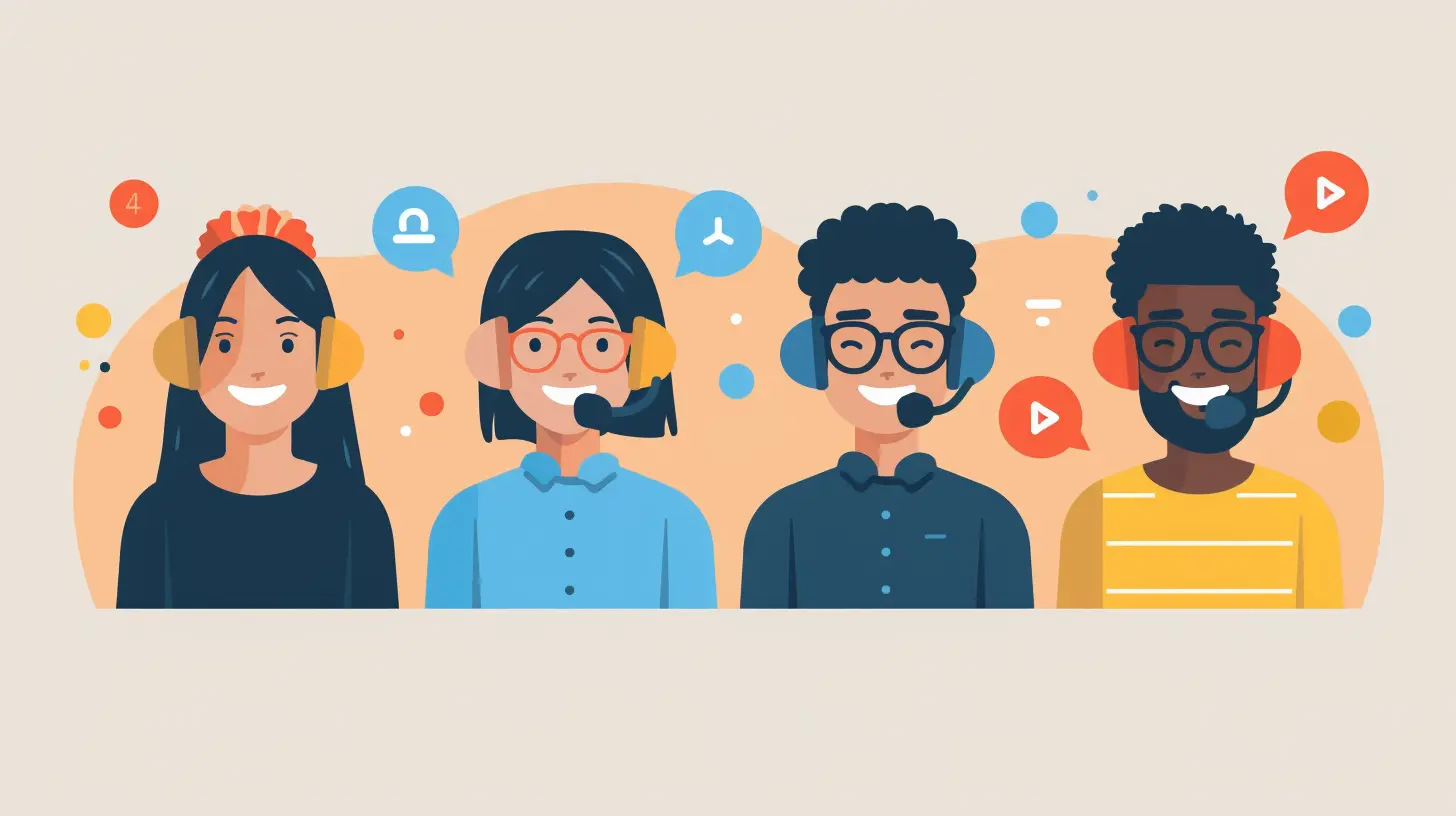How to Train Your Team for Exceptional Customer Service
23 June 2025
Let’s be honest—customer service can make or break a brand. We all remember interacting with a company that left us frustrated, ignored, or just plain disappointed. On the flip side, we also remember that one amazing customer support experience, where someone genuinely cared and solved our issue like they were saving the world. That’s the kind of service your team should be known for.
Now the million-dollar question: how do you get your team to that level?
Training a team for exceptional customer service isn't just about teaching them what to say—it's about shaping a culture, molding attitudes, and empowering people to go above and beyond consistently. So grab a cup of coffee (or two) because we're deep-diving into the strategy, mindset, and steps required to get your team there.
Why Exceptional Customer Service Is Worth Obsessing Over
Before we dive into the how, let’s talk about the why.Exceptional customer service isn't just a “nice to have.” It's a non-negotiable. In a world where reviews and word-of-mouth can spread like wildfire, great service builds trust, loyalty, and long-term business. Bad service? That can drive customers straight into your competitors’ arms.
Here’s a stat to chew on: 86% of customers say they’re willing to pay more for a better customer experience. Yep, people literally put their money where their feelings are.
So how do we make sure your team’s service doesn’t just check the boxes—but blows them up?
Step 1: Hire with Heart
You can't teach empathy. You can’t install passion or a helpful attitude with a PowerPoint presentation. It starts with hiring the right people.Look for team members who:
- Have strong emotional intelligence
- Stay calm under pressure
- Have a natural enthusiasm for helping others
- Listen first, talk second
Sure, experience is important, but personality and attitude often outweigh a long resume.
Think of your customer service team like the front line in a superhero movie. You want people who are dependable, composed, and ready to do the right thing—even when it's hard.
Step 2: Build a Service-First Culture
Training won’t stick if your culture doesn’t back it up.You can’t expect frontline workers to prioritize customers if the company sees them as an afterthought. Leaders need to walk the walk. That means:
- Celebrating great service moments
- Empowering team members with decision-making power
- Investing in tools that make their jobs easier
- Encouraging open conversations around customer feedback
When your team knows that excellent service is celebrated and expected, they’ll rise to the occasion.
Step 3: Set Clear Expectations
What does “exceptional” actually look like?You can’t train someone to hit a target if they can’t see it. Clear, tangible service standards are crucial. For example:
- Always respond within X hours
- Greet customers by name
- Own the problem until it’s resolved
- Follow up after an issue is resolved
The clearer the expectations, the easier it is for your team to deliver consistently.
Pro tip? Involve your team in creating these standards. When they help define "great service," they’re more likely to buy in.
Step 4: Teach the Soft Skills (And Then Some)
Scripts can only go so far. Empathy, active listening, conflict resolution—those soft skills are the real MVPs in customer service.Here’s what you should include in your training:
Empathy Training
Teach your team to put themselves in the customer’s shoes. Let them practice handling tough scenarios with compassion rather than defensiveness.Communication Skills
A friendly tone, clear language, and the ability to read between the lines make a huge difference in how customers respond. Role-playing here is gold.Problem Solving
Encourage creative thinking. Sometimes, solving a customer’s issue isn’t about following a flowchart—it’s about understanding what they need and finding the best path forward.Product Knowledge
If your team doesn’t know your product inside and out, they’ll always be one step behind. Build time into training for deep product immersion.Step 5: Make Training a Habit, Not an Event
One-and-done training? That’s like going to the gym once and expecting six-pack abs. Doesn’t work.Ongoing training keeps your team sharp. Here’s how to keep the learning fresh:
- Monthly workshops
- Microlearning (short, focused lessons)
- Live scenario testing
- Guest speakers or customer panels
- Sharing real customer feedback in team meetings
Make learning part of your company DNA. The more reps your team gets, the more confident and capable they’ll be.
Step 6: Empower, Don’t Micromanage
If your team is constantly needing approvals or waiting on higher-ups just to solve a basic issue, you’ve got a problem.Empower your team to make decisions on the spot. Give them the tools, training, and trust to handle problems without jumping through hoops.
It’s like driving a car—you want your team to feel like they’re in the driver’s seat, not strapped into the back with someone else steering.
Create clear boundaries (like refund limits or policy exceptions), and then let them work their magic within those lines.
Step 7: Use Real Stories to Drive the Lessons Home
People remember stories more than stats. So bring real customer interactions into your training.- Celebrate the wins (Did Sarah turn an angry customer into a raving fan? Share it!)
- Reflect on the fails (Not to shame, but to learn—What could we have done differently?)
- Highlight unexpected moments of wow (Sometimes it's the little things that leave the biggest impressions)
These stories make training real. They put faces to the policies. They make the lessons stick.
Step 8: Measure and Reward the Right Behaviors
You can’t improve what you don’t measure. But here’s the thing—don’t just measure speed (like call handle time). Focus on the quality of the experience.Track metrics like:
- Customer satisfaction scores (CSAT)
- Net promoter scores (NPS)
- First-contact resolution
- Customer retention rate
And when someone consistently crushes it? Recognize them. Celebrate them. Whether it’s a shout-out, bonus, or just a sincere thank you—rewarding great service fuels even more of it.
Step 9: Build Feedback Loops
Want to know how your service is doing?Ask. And then really listen.
Create channels for customers to share their thoughts—surveys, follow-up emails, or even one-on-one check-ins. But don’t stop there. Share that feedback with the team.
On top of that, invite feedback from your service team too. They’re on the front lines—they know what’s working and what’s frustrating.
Use that feedback to tweak processes, refine training, and evolve your approach. It shows your team (and your customers) that you’re listening and learning.
Step 10: Lead by Example
Here’s the kicker: customer service training isn’t just about the front line. Your entire company—yes, leadership included—has a role to play.When executives jump in to help during peak times or personally handle difficult cases, it sends a powerful message: No one is too important to serve the customer.
Want a culture of exceptional service? Then start modeling it at every level.
Final Thoughts: Service is a Superpower
Training your team for exceptional customer service isn’t a quick fix. It’s a process. A journey. A commitment to putting people first—every time.But the payoff? It’s massive. Loyal customers, glowing reviews, repeat business, and a brand reputation that sells itself.
So go on—look at your current training and ask yourself: "Are we just checking boxes, or are we creating service superheroes?"
You get what you train for. Train for greatness.
all images in this post were generated using AI tools
Category:
Customer ExperienceAuthor:

Matthew Scott
Discussion
rate this article
2 comments
Lena Whitley
This article offers valuable insights on training teams for exceptional customer service. Emphasizing skill development and a customer-centric approach can significantly enhance service quality and customer satisfaction. Great read!
November 15, 2025 at 6:04 AM

Matthew Scott
Thank you for your feedback! I'm glad you found the insights valuable. Team training is crucial for delivering great customer service!
Gavin McNair
Training your team for customer service is like teaching a cat to fetch—it's all about patience and a touch of humor! Remember, a happy team leads to happy customers, so sprinkle in some fun and watch the magic happen!
June 30, 2025 at 12:15 PM

Matthew Scott
Absolutely! A positive and fun training environment fosters engagement and ultimately leads to better customer experiences. Thank you for the reminder!


